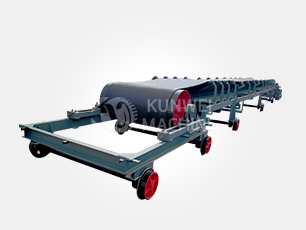Do belt conveyor bandwidth and length affect each other?
News 2025-05-07
There is indeed a subtle interplay between belt conveyor bandwidth and length, but the effect is not intuitive and absolute.
First of all, the choice of belt width is often based on the type of material, particle size, conveying capacity and the needs of the working environment. A wider belt width means that more material can be carried, thus improving conveying efficiency, especially when handling large quantities and sizes of material.
However, when considering the length of a belt conveyor, this factor is more related to the conveying distance, terrain conditions, power configuration and cost budget. Longer distances require greater technical stability and durability, and may require special designs or enhancements to belt materials, tensioning devices, drive systems, etc. to ensure stable operation of the entire system. In this case, the selection of the belt width is still influenced by the material characteristics, but due to the increase of the conveying length, more structural optimization will need to be considered, such as enhancing the stability of the brackets, adjusting the layout of the rollers, etc., in order to disperse the additional stress and wear that may be brought about by long-distance operation.
It is worth noting that the “interaction” between bandwidth and length is not reflected in a direct numerical relationship, but in the comprehensive consideration of system design and optimization. Wider bandwidths may require more drive capacity and more stable structural support, especially when designing conveyors for longer distances. Conversely, for shorter distances, but with large volumes of material and high efficiency, increasing the bandwidth to increase the conveyor capacity is key.


